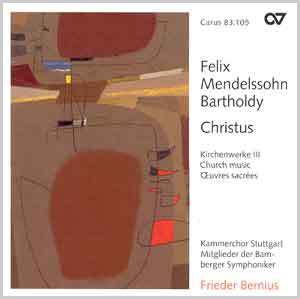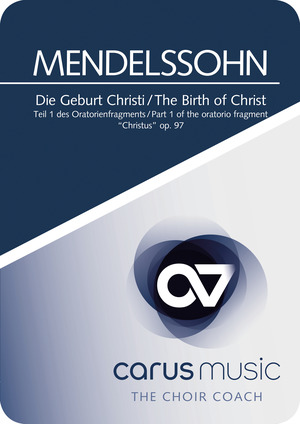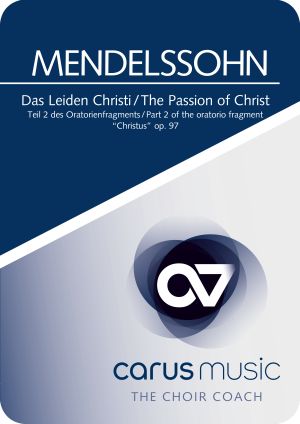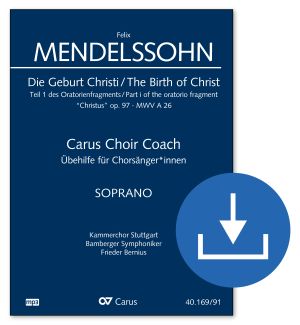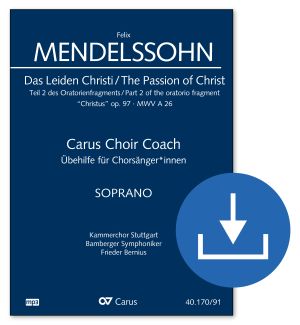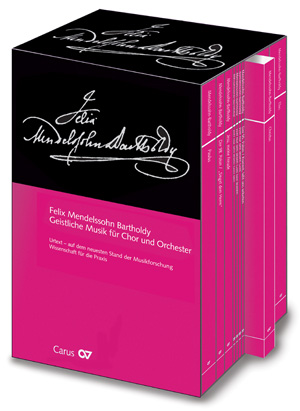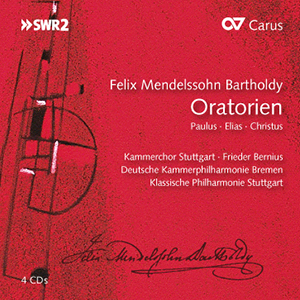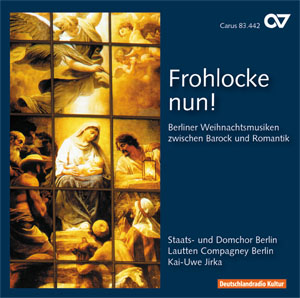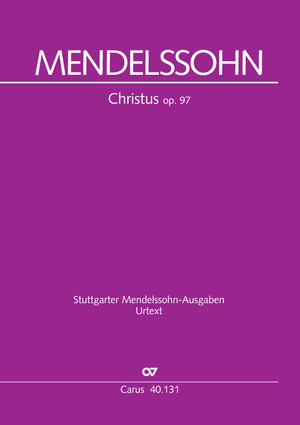
Christus
Oratorio fragament. Part I: The Birth of Christ; Part II: The Passion of Christ MWV A 26 (Op. 97), 1847
Mendelssohn's unfinished 3rd oratorio in the first critical edition. Performance material is available separately for Part 1 and Part 2 of the oratorio.
Part 1: "The Birth of Christ", Part 2: "The Passion of Christ"
In 1852 - five years after Mendelssohn's death - two independently performable fragments of an unfinished oratorio were published under the title Christus. Presumably he had planned a third part after the two parts "The Birth of Christ" and "The Passion of Christ".
"The Birth of Christ" is centred on a four-part choral movement, which is introduced by two short solo parts.
The second fragment, "The Passion of Christ", leads into the centre of the Passion: It deals with the scene "Jesus before Pilate" in a rapid, dramatic alternation of evangelist recitatives (tenor) and folk choirs. A contemplative choral movement forms the conclusion.
Contents
-
Composer
Felix Mendelssohn Bartholdy
| 1809-1847
-
Editor
R. Larry Todd
Prof. Dr. R. Larry Todd ist Arts & Sciences Professor of Music, Duke University, Durham. Bei Carus hat er zahlreiche Werke von Mendelssohn herausgegeben, darunter die Oratorien Elias, Paulus sowie Christus. Seine bei Carus in deutscher Sprache erschienene Mendelssohn-Biografie ist zumStandardwerk für Forschung und Mendelssohn-Fans geworden.
Personal details
Reviews
Mendelssohn Bartholdy, Felix: Christus
Mendelssohn Bartholdy, Felix: Christus
[ ] Von einem unvollendet gebliebenen Oratorium wurden schon bald nach Mendelssohns Tod zwei Fragmente unter dem Titel „Christus” veröffentlicht. Das Vorwort zur Carus-Ausgabe gibt interessante Einblicke in Mendelssohns fast zehn Jahre dauernde Suche nach und Versuche mit einem Oratorientext und resümiert: „Das Oratorium ’Christus’ bleibt nach wie vor in ein Geheimnis gehüllt.” Das erste Fragment „Die Geburt Christi” (ca. 8’) hat drei Sätze: ein Sopran-Rezitativ „Da Jesus geboren war zu Bethlehem”, einen Ensemblesatz (T, B, B) „Wo ist der neugeborne König” und einen sehr schönen Chor mit abschließendem Choral „Wie schön leuchtet ...”. Das zweite Fragment „Das Leiden Christi” (ca. 13’) springt mitten hinein in das Passionsgeschehen: Es ist die Szene „Jesus vor Pilatus” mit raschem, dramatischem Wechsel von Evangelistenworten mund Volkschören und betrachtendem Choral zum Abschluss. Die Musik ist dem „Elias” vergleichbar sowohl was die Höhe der Inspiration wie den lyrischen und dramatischen Charakter anlangt, ebenso im Schwierigkeitsgrad und der Orchesterbesetzung. Natürlich bietet sich eine getrennte Aufführung beider Fragmente zu Weihnachten bzw. Epiphanias und in der Passionszeit mit anderer de tempore-Musik an. Zusammen kann ich mir beide Teile vorstellen, z.B. im Januar, kirchenjahreszeitlich also als Rück- und Vorausblick, verbunden etwa mit Kantaten Bachs („Wie schön leuchtet ...” und einer der Estomihi-Kantaten), oder, etwas extravaganter, mit Vertonungen der Geburts-Verheißungen „Ave Maria”) und der Stabat Mater-Sequenz. Das Aufführungsmaterial ist für beide Teile getrennt erschienen.
Helmut Wolf
Quelle: Württembergische Blätter für Kirchenmusik, Sonderveröffentlichung Nov. 1998, S. 10
Frequent questions about this work
 There are no questions and answers available so far or you were unable to find an answer to your specific question about this work? Then click here and send your specific questions to our Customer Services!
There are no questions and answers available so far or you were unable to find an answer to your specific question about this work? Then click here and send your specific questions to our Customer Services!


